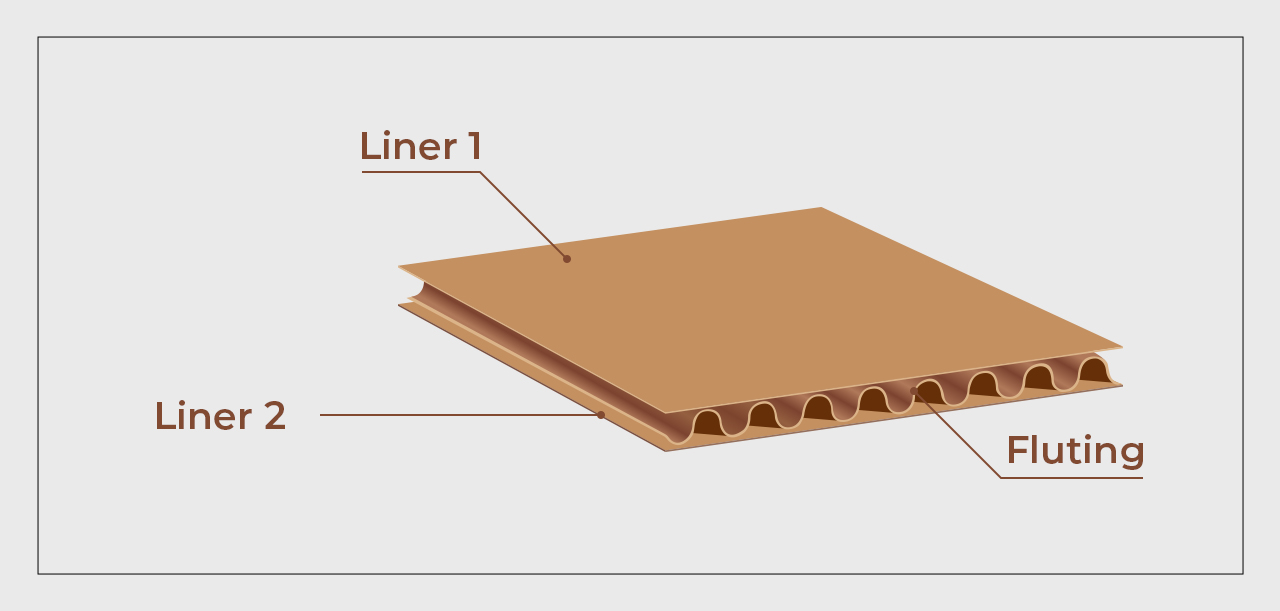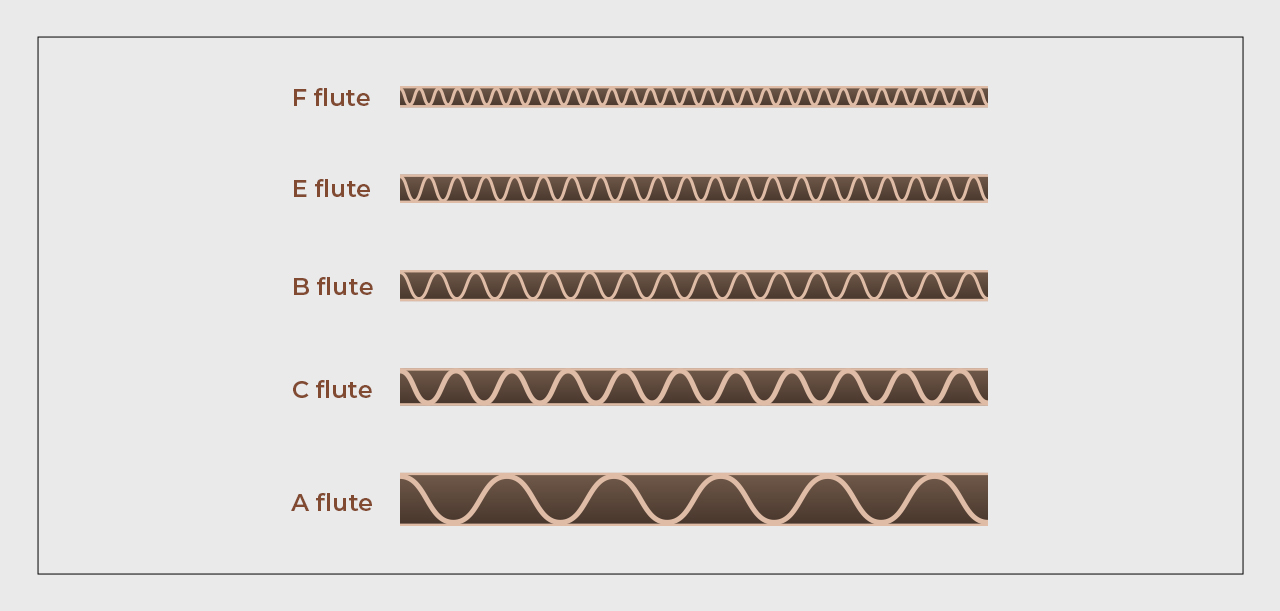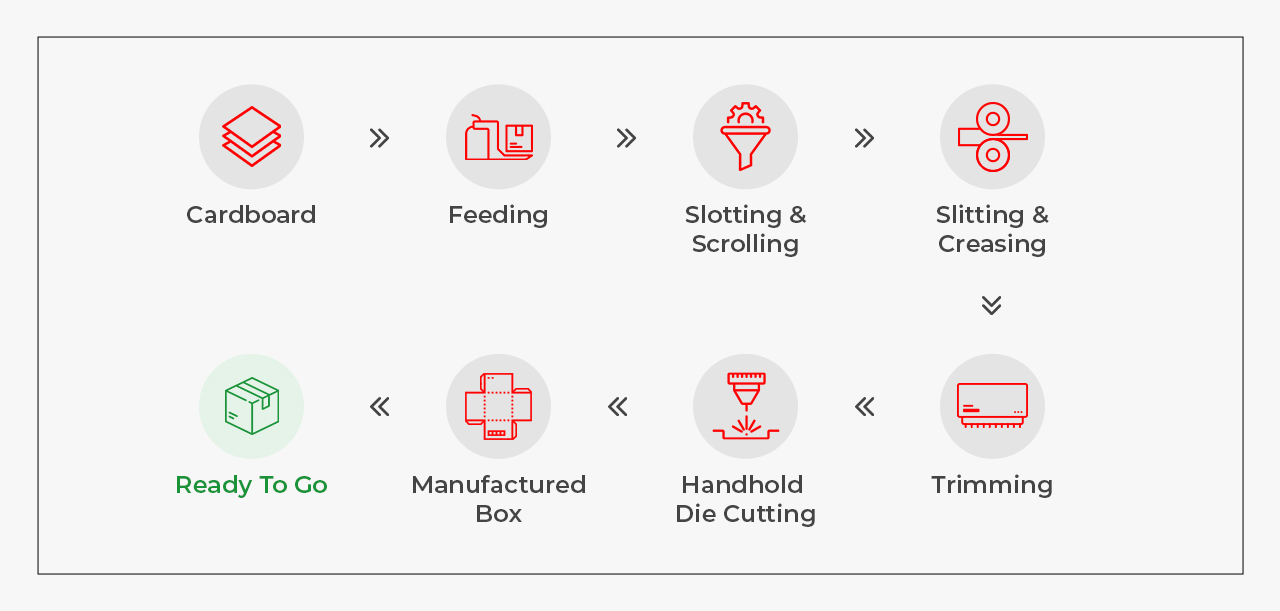We’re back with another interesting article on what’s in your corrugated box!
The last article - Part 1, showed how corrugated boxes were accidentally invented, the difference between paperboard, cardboard, and corrugated materials, the primary types of corrugated boxes, their uses in varied industries, and their many advantages.
In this article, we’ll be diving deeper into the details. From the walls and flutes to the entire production process and the strength tests your boxes undergo when corrugated boxes manufacturers make them, it will be an incredible second part of this series!
So, if you haven’t already been through the first article, we recommend you look at it and read ahead. If you have, let’s get started!
So, corrugated boxes are made of corrugated boards. But what exactly are corrugated boards?
The Main Components of Corrugated Boards
A corrugated board is made from two sheets or ‘liners’ glued to a ‘fluted’ inner medium. ‘Fluted’ means ridged. This layer is excellent for cushioning and support. The liners and fluted medium together make up a single-walled corrugated board.

Types of Flutes and Their Uses

The standard types of corrugated flutings are A, B, C, E, and F. These are categorized based on the flute sizes and the number of flutes per foot.
Customized versions can combine these types, sizes that fall between them, or unique designs. EE, EF, and BC are popular combination flutes used for double-walled boxes.
- A Flute
- B Flute
- C Flute
- E Flute
- F Flute
The A flute is the original type of flute with 36 flutes per foot and is mainly used for double-wall applications and thick padding. It is 4.8 mm thick.
Containing 49 flutes per foot, the B flute has the second-highest arch size. It is 3.2 mm thick and has excellent stacking strength and resistance.
The C flute is the most commonly used flute, which has 41 flutes per foot and a 4.0 mm thickness. It is also excellent for cushioning, stacking, and printing.
The E flute is the second-most-common flute, with 90 flutes per foot and a 1.6 mm thickness.
This F flute is the smallest and tightest of all standard flutes, with a 0.8mm thickness and 128 flutes per foot.
Corrugated Boxes Walls
While we introduced the walls in the previous article, here’s a short revision. Before you buy corrugated boxes or look for wholesale box packaging solutions, knowing what their primary types are and what would suit your requirements the best will be of great help.
Among the primary types of corrugated boxes are single-walled, double-walled, and triple-walled.
The ‘walls’ refer to the layers of corrugated materials used in the construction. A single-wall corrugated box will have a single layer of corrugated material between two flat sheets - or a single corrugated board. A double-walled box will have two layers between the flat sheets, and so on. Check out the previous article for further details.
The more walls, the higher the strength of your box and its capacity to hold bulky items.
The Production Process
Producing corrugated boxes involves processes that shape raw corrugated boards into functional packaging solutions. Each step creates strong, durable, versatile, and appealing corrugated boxes for various industries and needs.
- Making Corrugated Boards
- Printing
- Slotting and Scoring
- Slitting and Creasing
- Trimming
- Folding and Gluing
- Die-cutting
Corrugated boards are first made in machines called corrugators. To create the flute, vast rolls of paper are steam heated and combined. It is then attached to the liners with glue and pressed flat by pressure rollers to create a single wall through a single facer. A double glue unit and double backer are used for a double wall corrugated board. Throughout the process, the heat is constantly controlled, and temperatures are monitored to cure the glue and create strong bonds.
Next, the boards are stacked into the box printing and creation equipment to be branded/printed with designs and colors.
Slotting creates openings on the corrugated board to form the flaps and tabs for folding and assembling the box. Scoring is the creation of a crease or impression for accurate folding. With specialized machinery, slotting, and scoring ensures easy folding of the corrugated board and efficient box assembly.
Slitting and creasing enhance the flexibility and functionality of the boxes. Slitting involves cutting the corrugated board into narrower strips so it can be used to create specific box features. Creasing presses lines into the board for smooth and accurate folding. Slitting and creasing are great for creating intricate box designs and customization.
After slotting, scoring, slitting, and creasing, trimming is when the board is cut into the required dimensions to create separate box panels. With accurate trimming, the panels fit perfectly together during assembly.
Once the boards are printed, formed, and trimmed, the folding machine bends the boxes along the score lines and glues them.
Die-cutting creates intricate shapes, windows, perforations, and other features on corrugated boxes.

Tests for Strength
Once the corrugated boxes manufacturers produce them, they undergo two main strength tests: the Burst Strength or Mullen Test and the Edge Crush Test or ECT.
- Mullen/Burst Strength Test
- Edge Crush Test/ECT
Developed in 1887, the Mullen Test measures the burst strength of corrugated boxes by applying force to them until they burst. The results are shared in pounds with a rating. E.g., a 100# rating denoted that the box can withstand 100 pounds of force per square inch.
The shortcoming of this test is that it doesn’t consider the fluting medium. That’s where the Edge Crush Test or ECT comes in.
As its name suggests, this test measures the vertical compression strength of boxes. It’s a great way to gauge how well the boxes will react to being stacked or how they will hold their form in transit and handling. An ECT of 60 means the box can withstand 60 lbs of pressure.
Conclusion
And with that, we’ve reached the end of a detailed account of how corrugated box manufacturers produce boxes for wholesale box packaging.
From discussing the components of corrugated boxes to going through the entire production process and strength tests, we hope you enjoyed the second installment in the What’s in your Corrugated Box series!

